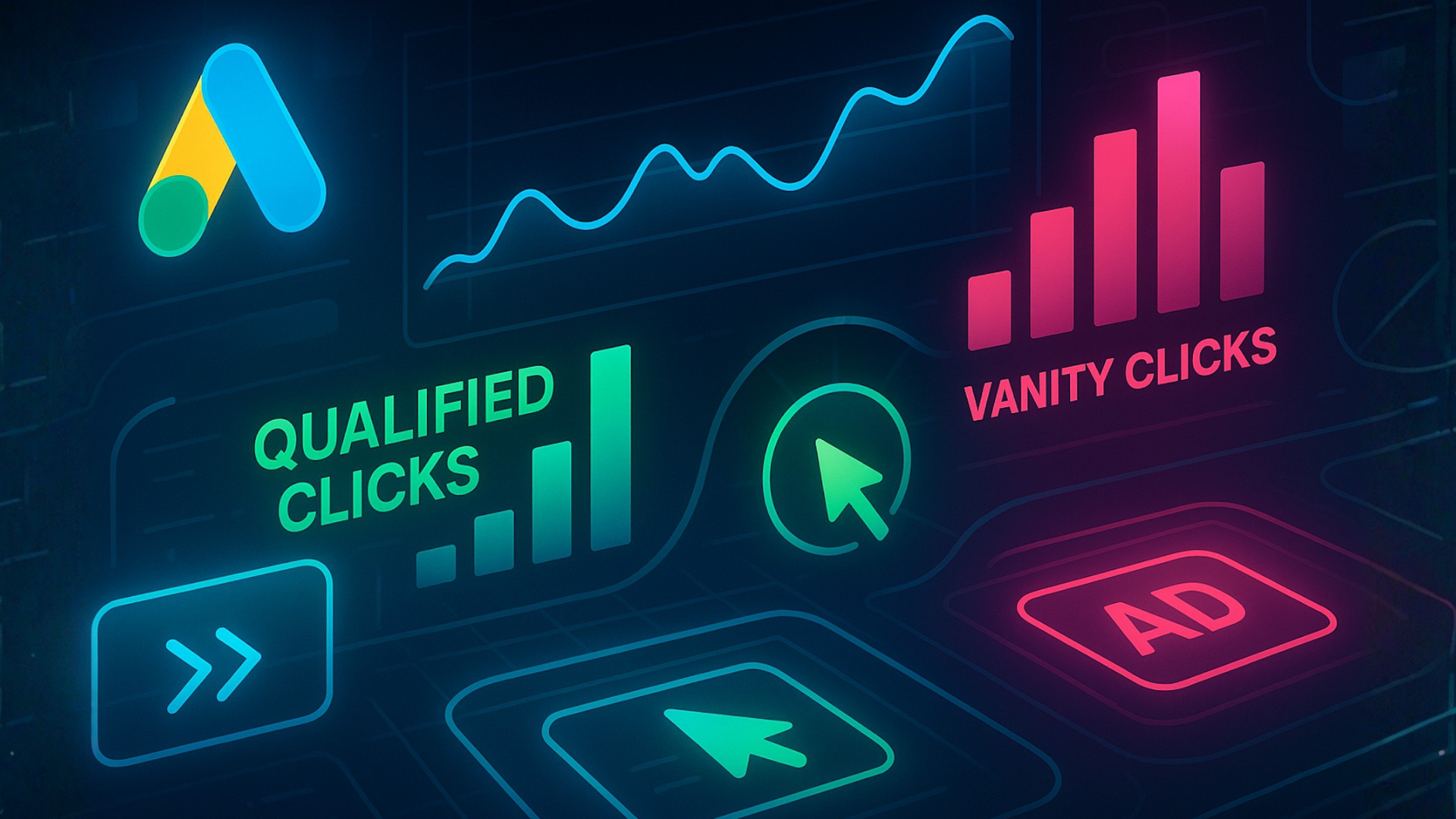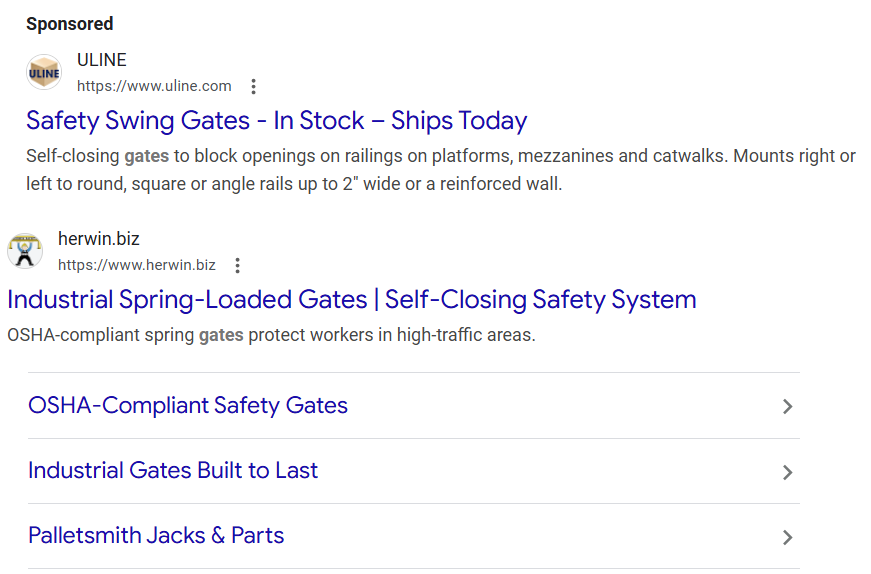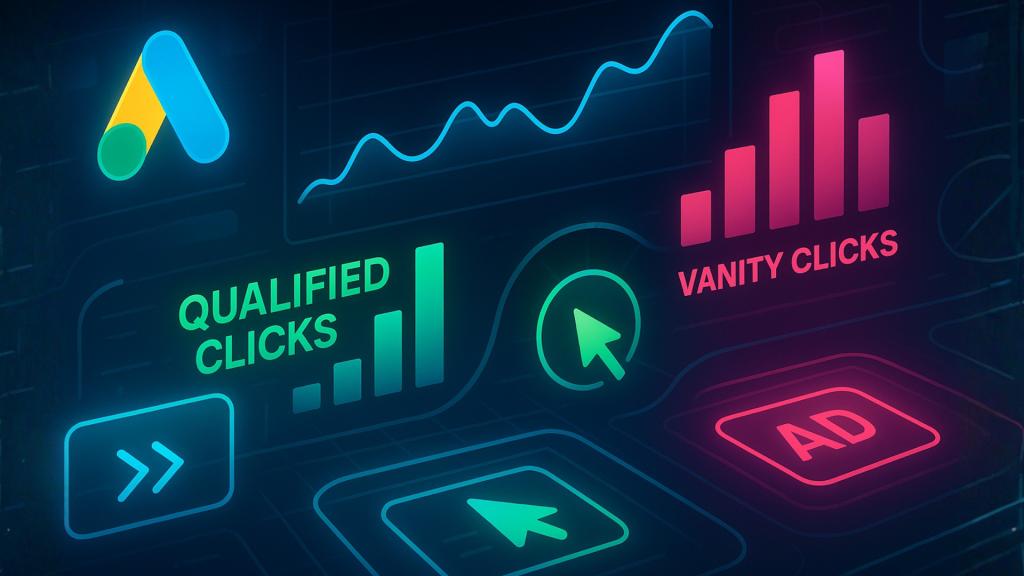Why a lower CTR can be better for your PPC campaigns

Many PPC advertisers obsess over click-through rates, using them as a quick measure of ad performance.
But CTR alone doesn’t tell the whole story – what matters most is what happens after the click. That’s where many campaigns go wrong.
The problem with chasing high CTRs
Most advertisers think the ad with the highest CTR is often the best. It should have a high Quality Score and attract lots of clicks.
However, in most cases, lower CTR ads usually outperform higher CTR ads in terms of total conversions and revenue.
If all I cared about was CTR, then I could write an ad:
- “Free money.”
- “Claim your free money today.”
- “No strings attached.”
That ad would get an impressive CTR for many keywords, and I’d go out of business pretty quickly, giving away free money.
When creating ads, we must consider:
- Type of searchers we want to attract.
- Ensure the users are qualified.
- Set expectations for the landing page.
I can take my free money ad and refine it:
- “Claim your free money.”
- “Explore college scholarships.”
- “Download your free guide.”
I’ve now:
- Told searchers they can get free money for college through scholarships if they download a guide.
- Narrowed down my audience to people who are willing to apply for scholarships and willing to download a guide, presumably in exchange for some information.
If you focus solely on CTR and don’t consider attracting the right audience, your advertising will suffer.
While this sentiment applies to both B2C and B2B companies, B2B companies must be exceptionally aware of how their ads appear to consumers versus business searchers.
B2B companies must pre-qualify searchers
If you are advertising for a B2B company, you’ll often notice that CTR and conversion rates have an inverse relationship. As CTR increases, conversion rates decrease.
The most common reason for this phenomenon is that consumers and businesses can search for many B2B keywords.
B2B companies must try to show that their products are for businesses, not consumers.
For instance, “safety gates” is a common search term.
The majority of people looking to buy a safety gate are consumers who want to keep pets or babies out of rooms or away from stairs.
However, safety gates and railings are important for businesses with factories, plants, or industrial sites.
These two ads are both for companies that sell safety gates. The first ad’s headlines for Uline could be for a consumer or a business.
It’s not until you look at the description that you realize this is for mezzanines and catwalks, which is something consumers don’t have in their homes.
As many searchers do not read descriptions, this ad will attract both B2B and B2C searchers.

The second ad mentions Industrial in the headline and follows that up with a mention of OSHA compliance in the description and the sitelinks.
While both ads promote similar products, the second one will achieve a better conversion rate because it speaks to a single audience.
We have a client who specializes in factory parts, and when we graph their conversion rates by Quality Score, we can see that as their Quality Score increases, their conversion rates decrease.
They will review their keywords and ads whenever they have a 5+ Quality Score on any B2B or B2C terms.

This same logic does not apply to B2B search terms.
Those terms often contain more jargon or qualifying statements when looking for B2B services and products.
B2B advertisers don’t have to use characters to weed out B2C consumers and can focus their ads only on B2B searchers.
How to balance CTR and conversion rates
As you are testing various ads to find your best pre-qualifying statements, it can be tricky to examine the metrics. Which one of these would be your best ad?
- 15% CTR, 3% conversion rate.
- 10% CT, 7% conversion rate.
- 5% CTR, 11% conversion rate.
When examining mixed metrics, CTR and conversion rates, we can use additional metrics to define our best ads. My favorite two are:
- Conversion per impression (CPI): This is a simple formula dividing your conversion by the number of impressions (conversions/impressions).
- Revenue per impression (RPI): If you have variable checkout amounts, you can instead use your revenue metrics to decide your best ads by dividing your revenue by your impressions (revenue/impressions).
You can also multiply the results by 1,000 to make the numbers easier to digest instead of working with many decimal points. So, we might write:
- CPI = (conversions/impressions) x 1,000
By using impression metrics, you can find the opportunity for a given set of impressions.
| CTR | Conversion rate | Impressions | Clicks | Conversions | CPI |
| 15% | 3% | 5,000 | 750 | 22.5 | 4.5 |
| 10% | 7% | 4,000 | 400 | 28 | 7 |
| 5% | 11% | 4,500 | 225 | 24.75 | 5.5 |
By doing some simple math, we can see that option 2, with a 10% CTR and a 7% conversion rate, gives us the most total conversions.
Dig deeper: CRO for PPC: Key areas to optimize beyond landing pages
Focus on your ideal customers
A good CTR helps bring more people to your website, improves your audience size, and can influence your Quality Scores.
However, high CTR ads can easily attract the wrong audience, leading you to waste your budget.
As you are creating headlines, consider your audience.
- Who are they?
- Do non-audience people search for your keywords?
- How do you dissuade users who don’t fit your audience from clicking on your ads?
- How do you attract your qualified audience?
- Are your ads setting proper landing page expectations?
By considering each of these questions as you create ads, you can find ads that speak to the type of users you want to attract to your site.
These ads are rarely your best CTRs. These ads balance the appeal of high CTRs with pre-qualifying statements that ensure the clicks you receive have the potential to turn into your next customer.







Recent Comments